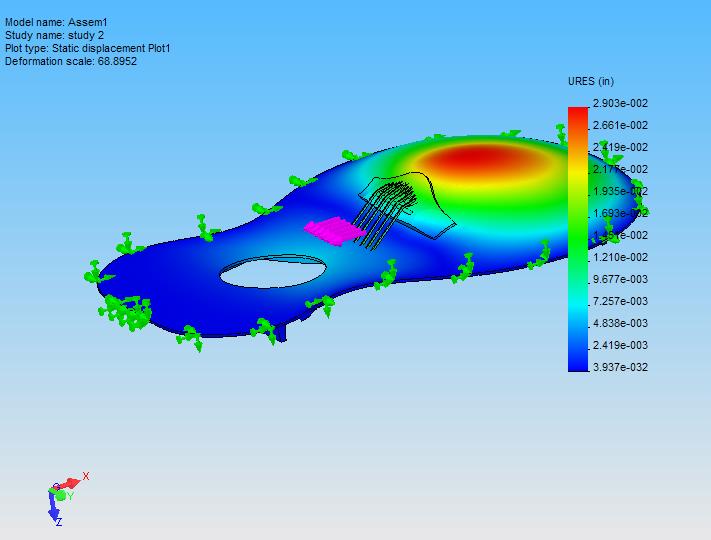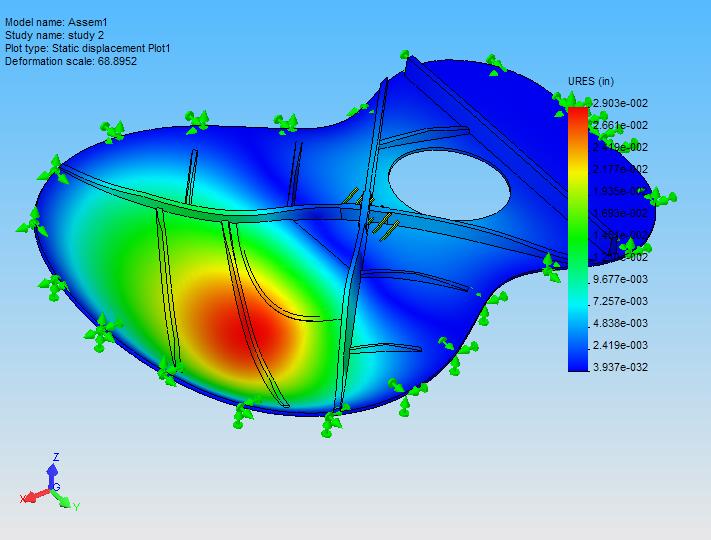I've been building some nomex cored double tops over the last few years and have decided I really want to focus on that type of structure. I've used pretty standard X bracing on them but have decided I want to enter into more of a development phase with them and see where I can take it. I think there's good fruit here but will know more later.
The postal service was kind enough to remove one of my necks for me, so I thought I'd turn that guitar into a test bed of sorts and make up a variety of tops to place on it.
So all of this lead me to the following; I thought I needed to know more about how a standard guitar top looked like under a load. So I built this FEA model based on my standard design and applied some material properties to it that I've measured over the years. I was pretty pleased when I put a dial indicator on one of my instruments and measured the deflection. I found that the model matched up pretty good, not perfect but pretty good, within about 10%.
I feel that this gives me a platform to spring board off of, checking my stress distributions and deflections on my new designs using the FEA tool comparing that data to my standard design. I will then build the candidate tops and place them on my test bed and see if I can correlate the sound to the model, who knows

Eventually I'll try to move this model from a static model to a dynamic one.
I thought there may be some out there how are interested in type of thing and also thought that many of you might be interested in what a top looks like under a string load (Daddario light). All the deflections are exaggerated for easy visualization. The red areas represent .029 inches, the actual guitar deflected .026. Right near the sound hole the actual guitar deflected .009 and the model predicted .007
Here are a couple of screen shots for you guys.



